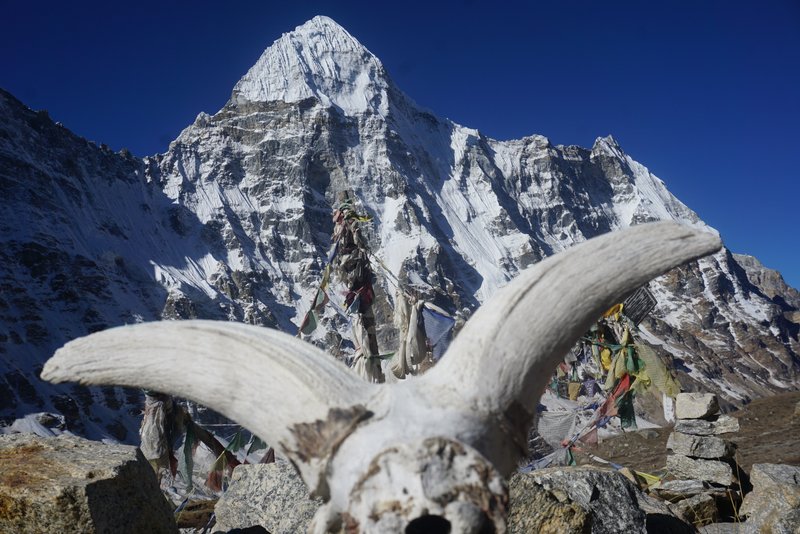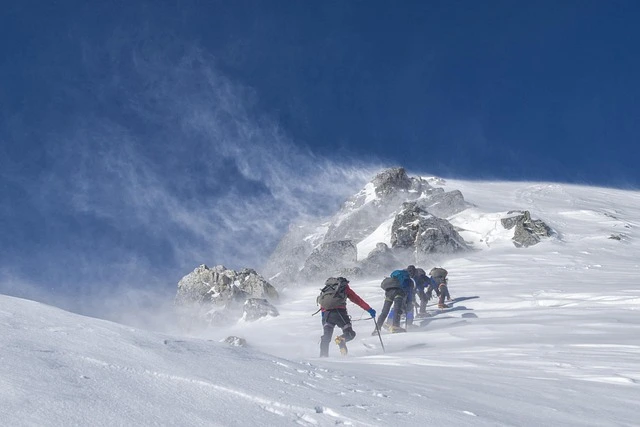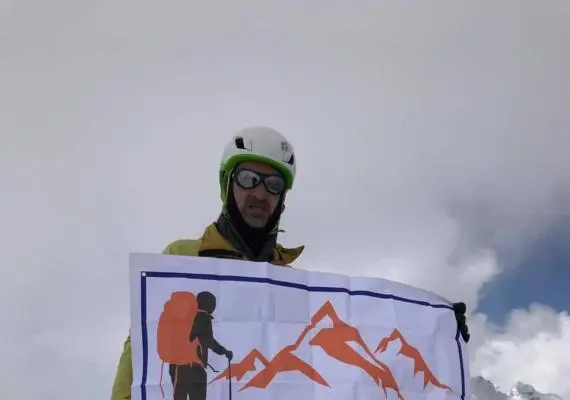Have you ever dreamed of trekking through untouched Himalayan wilderness, far from the crowds of Everest and Annapurna? The Kanchanjunga Trek offers exactly that—an extraordinary journey to the base of the world's third-tallest mountain through some of Nepal's most remote virgin terrains.
Standing at 8,586 meters, Mount Kanchanjunga straddles the Nepal-India border, creating a natural sanctuary that remains refreshingly uncommercial. Unlike its famous neighbors, this Kanchanjunga Base Camp Trek takes you through villages where traditional life continues unchanged, where yak herders still follow ancient paths, and where the mountains feel genuinely wild.
Why Choose the Kanchanjunga Circuit Trek
Let me paint you a picture: imagine walking for days without seeing another trekking group, staying in family-run tea houses where you're treated as an honored guest rather than just another tourist. The Kanchanjunga Circuit Trek delivers this authentic experience while showcasing:
- Pristine wilderness untouched by mass tourism
- Both north and south base camps in one epic journey
- Cultural diversity from Hindu lowlands to Buddhist highlands
- Wildlife corridors where snow leopards still roam
- Views of five peaks over 8,000 meters
This Kanchanjunga trek Nepal adventure isn't just about reaching base camp—it's about immersing yourself in one of the planet's last true wilderness areas. The remote villages along the route offer windows into lifestyles that have remained unchanged for centuries.
Overview of the Kanchanjunga Conservation Area
The trek takes you through the magnificent Conservation Area, established in 1997 to protect this biodiversity hotspot. Covering 2,035 square kilometers, it's home to:
- Over 2,000 plant species, including 30 varieties of rhododendron
- Endangered snow leopards, red pandas, and Himalayan black bears
- 250+ bird species, from tiny sunbirds to massive lammergeiers
- Traditional communities living in harmony with nature
The Kanchanjunga massif dominates the skyline throughout your journey, but the real magic happens at ground level. Every day brings new ecosystems—from bamboo forests where red pandas hide to alpine meadows bursting with wildflowers. Wildlife sighting opportunities increase as you climb higher, especially in the early morning hours.

Complete Kanchanjunga Trek Itinerary
Standard Kanchanjunga Trek Duration and Route Options
Planning your Kanchanjunga trek itinerary starts with choosing your route. The Kanchanjunga trek duration typically ranges from:
- 16-18 days: North Base Camp only (easier option)
- 20-22 days: Complete circuit including both base camps
- 24-26 days: Extended circuit with side trips and rest days
Most trekkers opt for the full circuit, maximizing their investment in permits and travel time. The South Base Camp Trekking Itinerary alone misses the dramatic northern approaches, while combining both offers incredible variety in landscapes and cultures.
Day-by-Day Kanchanjunga Trek Itinerary
Here's your day-by-day itinerary for the classic 22-day circuit:
Days 1-2: Kathmandu to Taplejung
- Fly Kathmandu to Bhadrapur (45 minutes)
- Drive to Taplejung (8-10 hours on winding mountain roads)
- Overnight in local lodge, prepare permits
Days 3-7: Trek to Ghunsa (3,427m) The journey begins! You'll trek through:
- Terraced farmlands and cardamom plantations
- Suspension bridges over roaring rivers
- Increasingly Buddhist villages with prayer flags
- First glimpses of snow-capped peaks
Days 8-11: Ghunsa to Pangpema (5,143m) Now you're in serious mountain territory:
- Trek through Ghunsa valley's ancient forests
- Cross the tree line into alpine meadows
- Reach Ramche (4,580m) for acclimatization
- Final push to Pangpema (North Base Camp)
- Jaw-dropping views of Kanchanjunga's north face
Days 12-16: Cross to South Base Camp The adventure continues as you:
- Descend through different valleys
- Experience dramatic landscape changes
- Navigate remote passes
- Reach South Base Camp for sunset views
Days 17-22: Return Journey
- Descend through the scenic Arun Valley
- Enjoy warmer temperatures and thick forests
- Celebrate in Taplejung before returning to Kathmandu
Each day typically involves 5-7 hours of walking, with rest days strategically placed for acclimatization. The beauty of staying in tea houses means you can trek with a lighter pack, focusing on the incredible surroundings rather than heavy camping gear.
Kanchanjunga Trek Cost Breakdown
Total Budget and Permit Fees
Let's talk money—the Kanchanjunga Trek cost breaks down into several categories. Here's what you'll need to budget:
Permits (Mandatory):
- Restricted Area Permit: $20 per week per person
- Conservation Area Permit: NPR 2,000 (about $15)
- Permit fees total: Approximately $55-75 depending on trek duration
Additional Costs:
- Domestic flights: $300-400 roundtrip
- Transportation to/from Taplejung: $100-150
- Guide (mandatory): $25-30 per day
- Porter (optional but recommended): $18-22 per day
- Insurance and miscellaneous: $200-300
Total estimated budget: $2,000-3,000 per person for the complete experience
Accommodation and Food Costs
The accommodation cost along the Kanchanjunga trail remains refreshingly affordable:
- Basic tea houses: $5-10 per night
- Meals: $5-8 per meal (increasing with altitude)
- Daily food and accommodation: $25-35
These remote villages offer simple but clean rooms, usually twin-sharing with basic bedding. Don't expect luxury—think authentic mountain hospitality instead. Hot showers become rare luxuries above 3,500m, but the warm welcome makes up for any lack of amenities.
Guide and Porter Expenses
Unlike some Nepal treks, Kanchanjunga requires a registered guide due to its restricted area status. Your guide and porter cost includes:
- Experienced guides: Essential for navigation and permits
- Daily wages plus food and accommodation
- Insurance coverage for your support team
- Tips (10-15% of total wages is customary)
Dependable porters transform your trek experience, allowing you to enjoy the journey without heavy pack weight. They're also cultural ambassadors, sharing stories and local knowledge that no guidebook can match.
Best Time for Kanchanjunga Trek
Spring Season (March-May)
Ask any seasoned trekker about the best time for Kanchanjunga Trek, and they'll likely say Spring (March-May). Here's why:
- Rhododendrons paint entire hillsides red, pink, and white
- Clear skies offer unobstructed mountain views
- Comfortable daytime temperatures (though nights remain cold)
- Wildlife becomes more active after winter
- Snow levels are manageable on high passes
March can still see winter's lingering grip, while May brings pre-monsoon clouds. April hits the sweet spot with stable weather and nature's greatest flower show.
Autumn Season (September-November)
The best season debate always includes Autumn (Sept-Nov), offering:
- Crystal-clear weather conditions after monsoon washing
- Incredible visibility for photography
- Stable temperatures and minimal precipitation
- Local festivals bringing villages to life
- Harvest season in lower regions
October particularly shines with perfect trekking conditions, though it's slightly busier than spring (still nothing compared to Everest Base Camp crowds).
Monsoon and Winter Considerations
While less popular, off-season trekking has its rewards:
Monsoon (June-August):
- Lush, green landscapes
- Dramatic cloud formations
- Leeches and muddy trails (the downside)
- Limited mountain views
Winter (December-February):
- Ultimate solitude
- Stark, beautiful landscapes
- Extreme cold above 3,000m
- Some high passes may be blocked
These seasons demand extra preparation but reward adventurous spirits with unique experiences and virtually empty trails.
Kanchanjunga Trek Difficulty and Preparation
Physical Fitness Requirements
Let's be honest about Kanchanjunga trek difficulty—this isn't a casual stroll. The trek demands:
- Excellent cardiovascular fitness
- Strong leg muscles for long ascents/descents
- Mental stamina for 6-8 hour trekking days
- Experience with multi-day hiking (highly recommended)
Your physical fitness preparation should begin at least 2-3 months before departure. Focus on:
- Cardio workouts (running, cycling, swimming)
- Leg strengthening exercises
- Practice hikes with a weighted pack
- Stair climbing for altitude simulation
Remember, altitude sickness Kanchanjunga risks are real—fitness helps but doesn't guarantee immunity from altitude effects.
Altitude Challenges and Acclimatization
Speaking of altitude, proper acclimatization makes or breaks your trek. The golden rules:
- Climb slowly (no more than 300-500m sleeping elevation gain per day above 3,000m)
- Stay hydrated (3-4 liters daily)
- Listen to your body's warning signs
- Include rest days in your itinerary
- Consider preventive medication (consult your doctor)
Altitude sickness Kanchanjunga symptoms include headaches, nausea, and breathlessness. Minor symptoms are normal, but severe symptoms require immediate descent. Your guide will monitor your condition, but self-awareness is crucial.
Essential Kanchanjunga Trek Packing List
Your Kanchanjunga trek packing list needs to balance warmth, weight, and versatility:
Clothing Essentials:
- Base layers (merino wool or synthetic)
- Insulating layers (fleece or down jacket)
- Waterproof shell jacket and pants
- Trekking pants (2-3 pairs)
- Warm hat, sun hat, and buff
- Gloves (liner + insulated)
Gear Must-Haves:
- Sleeping bag rated to -15°C
- Trekking boots (broken in!)
- Daypack (25-35 liters)
- Trekking poles
- Headlamp with extra batteries
- Water purification tablets/filter
Personal Items:
- Sunscreen (SPF 50+) and lip balm
- Personal first aid kit
- Toiletries and wet wipes
- Camera with extra batteries
- Snacks and energy bars
Pro tip: You can rent or buy gear in Kathmandu, but don't compromise on boots or sleeping bags—these make or break your comfort.
Kanchanjunga Trek Highlights
Spectacular Mountain Views
The Kanchanjunga trek highlights start and end with the mountains. Imagine waking up to:
- Stunning mountain views of five 8,000m+ peaks
- The entire Kanchanjunga massif glowing at sunrise
- Makalu, Everest, and Lhotse on clear days
- Intimate views of hanging glaciers and icefalls
- Star-filled nights with the Milky Way overhead
The north base camp offers face-to-face encounters with Kanchanjunga's immense north wall, while the south provides panoramic vistas stretching to Tibet. Photography enthusiasts will exhaust memory cards capturing these otherworldly scenes.
Wildlife and Nature Experiences
Beyond mountains, the Conservation Area harbors incredible biodiversity. Wildlife sighting possibilities include:
- Snow leopards (extremely rare but present)
- Red pandas in bamboo forests
- Blue sheep grazing on high meadows
- Himalayan tahr on rocky cliffs
- Over 250 bird species
Even if you don't spot the elusive big cats, evidence of their presence—tracks, scratch marks, prey remains—adds excitement to each day. The remote virgin terrains support ecosystems found nowhere else on Earth.
Cultural Immersion in Remote Villages
Perhaps the most rewarding highlights come from cultural immersion in these isolated communities:
- Share butter tea with Tibetan Buddhist families
- Witness traditional Limbu ceremonies
- Learn about medicinal plant use from village elders
- Experience genuine hospitality in family-run tea houses
- Observe daily life unchanged by modernity
These remote villages offer authentic connections impossible on commercialized routes. Language barriers dissolve through shared smiles, and you'll leave with stories that touristy treks simply can't provide.
Safety and Support on Kanchanjunga Trek
Professional Guide Services and Emergency Protocols
Kanchanjunga trek safety relies heavily on professional support. Your experienced guides provide:
- Route navigation through unmarked trails
- Weather assessment and decision-making
- First aid response and altitude monitoring
- 24/7 logistics coordination with base teams
- Local knowledge for avoiding hazards
Emergency protocols include:
- Satellite phone communication
- Established evacuation routes
- Helicopter rescue coordination (ensure your insurance covers rescue expenses up to 6,000m)
- Connection with medical facilities in Kathmandu
Never underestimate the remoteness—you'll be days from proper medical care, making prevention and preparation vital.
Health and Medical Considerations
Beyond altitude concerns, prepare for:
- Water purification (streams may contain harmful bacteria)
- Food hygiene in remote areas
- Cold-related injuries (frostbite prevention)
- Sun exposure at high altitude
- Basic wound care for blisters and cuts
Pack a comprehensive first aid kit including:
- Altitude sickness medication
- Antibiotics for stomach issues
- Pain relievers and anti-inflammatories
- Blister treatment supplies
- Personal prescription medications (with extras)
Conclusion
The Kanchanjunga Trek stands as Nepal's last great frontier—a place where adventure means more than just reaching base camp. It's about discovering remote virgin terrains where nature reigns supreme, experiencing cultures untouched by globalization, and challenging yourself in one of Earth's most spectacular settings.
This isn't just another tick on your trekking bucket list. The Kanchanjunga Base Camp Trek offers transformation through isolation, beauty through rawness, and achievement through genuine challenge. From the rhododendron forests to the glacier-carved valleys, from Buddhist monasteries to the mighty Kanchanjunga massif itself, every step writes a story worth telling.
Ready to Begin Your Kanchanjunga Adventure?
Don't let another season pass dreaming about the third-tallest mountain in the world. Whether you're drawn by the stunning mountain views, the cultural immersion in remote villages, or simply the call of the unknown, the Kanchanjunga Trek awaits.
Take action today:
- Research reputable trekking agencies specializing in remote area treks like Himalayanhero Adventures
- Start your fitness preparation program
- Book your trek 3-4 months in advance for proper planning
- Connect with past trekkers for firsthand insights
- Begin gathering your gear
The mountains are calling—will you answer? Contact Himalayanhero Adventures today to start planning your Kanchanjunga Trek and discover why this hidden gem represents the true spirit of Himalayan adventure. Your journey to one of Nepal's most pristine wilderness areas begins with a single step.
Remember: The best adventures happen where the roads end and the trails begin. See you in the mountains!






